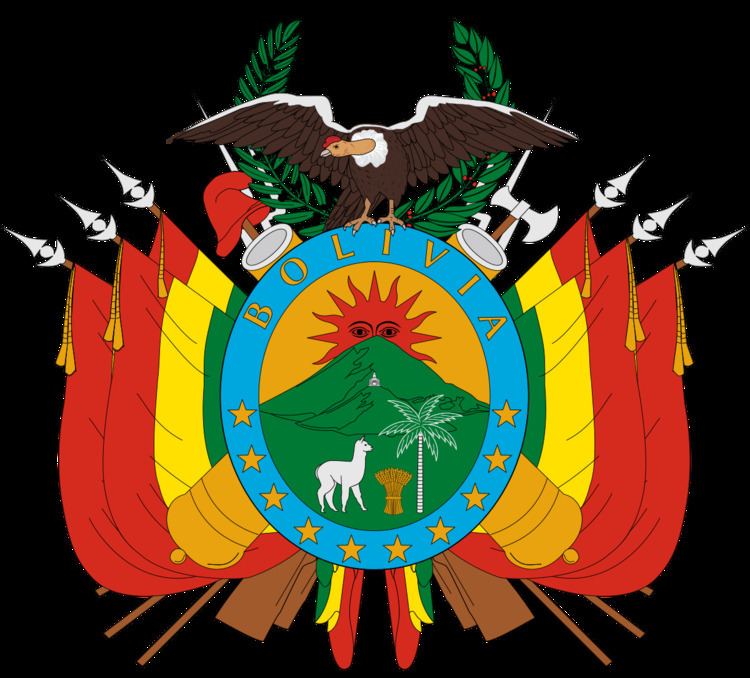Formation 11 August 1825 | Website www.presidencia.gob.bo | |
 | ||
Appointer Direct popular election Term length Five yearsrenewable once | ||
The President of the Plurinational State of Bolivia (Spanish: Presidente del Estado Plurinacional de Bolivia) or President of Bolivia (Spanish: Presidente de Bolivia), is head of state and head of government of Bolivia. According to the current Constitution, the president is elected by popular vote to a five-year term, renewable once. Since 2009, if no candidate wins a majority, the top two candidates advance to a runoff election. Prior to 2009, if no candidate won half the popular vote, the president was chosen by a vote in a joint legislative session from among the top two candidates (prior to 1995, the top three candidates were eligible).
Contents
The current President of Bolivia is Evo Morales, since 22 January 2006. He was elected in 2005, and reelected in 2009 and again in 2014. On October 17, 2015, Morales surpassed Andrés de Santa Cruz's nine years, eight months, and twenty-four days in office to become the president with the longest unbroken term in office. Víctor Paz Estenssoro is the longest-serving president with just over 12 years in office, but these terms were nonconsecutive.
History
During its more than 191 years of independence, Bolivia has been ruled by the military leaders who fought for independence, the leaders of the War of the Pacific, representatives of the aristocracy, and democratically elected leaders. Also, the history of the presidency has involved civil wars, more than 190 coups and violence.
Different titles have been used, such as "Liberator of Bolivia" (used by Simón Bolívar and Antonio José de Sucre), and "Supreme Protector" (by Andrés de Santa Cruz).
The following table contains a list of the individuals who have served as President of Bolivia.
Historical reputation
In 1983, a poll was taken by the newspaper Última Hora to determine which seven historical presidents were regarded as most significant. The "winners" were Antonio José de Sucre, Andrés de Santa Cruz, Manuel Isidoro Belzu, Mariano Melgarejo, Aniceto Arce, Ismael Montes, and Víctor Paz Estenssoro.
Presidential succession
In the event of the death or permanent incapacity of the President, the Vice President of Bolivia would assume the office. The President of the Senate and the President of the Chamber of Deputies are third and fourth in the line of succession. In the 2005 political crisis, with all of these positions exhausted, Eduardo Rodríguez Veltzé, the Chief Justice of the Bolivian Supreme Court, assumed the presidency. Under the 2009 Constitution, however, the assumption of power by the President of the Chamber of Deputies automatically precipitates an election within 90 days.
Acting President
In the case of temporary incapacity or absence from the country, the title of Acting President (Spanish: Presidente en ejercicio) is transferred to lower officials according to the order of presidential succession. In September 2012, Senate President Gabriela Montaño became the first woman to assume this office since the presidency of Lidia Gueiler Tejada.
